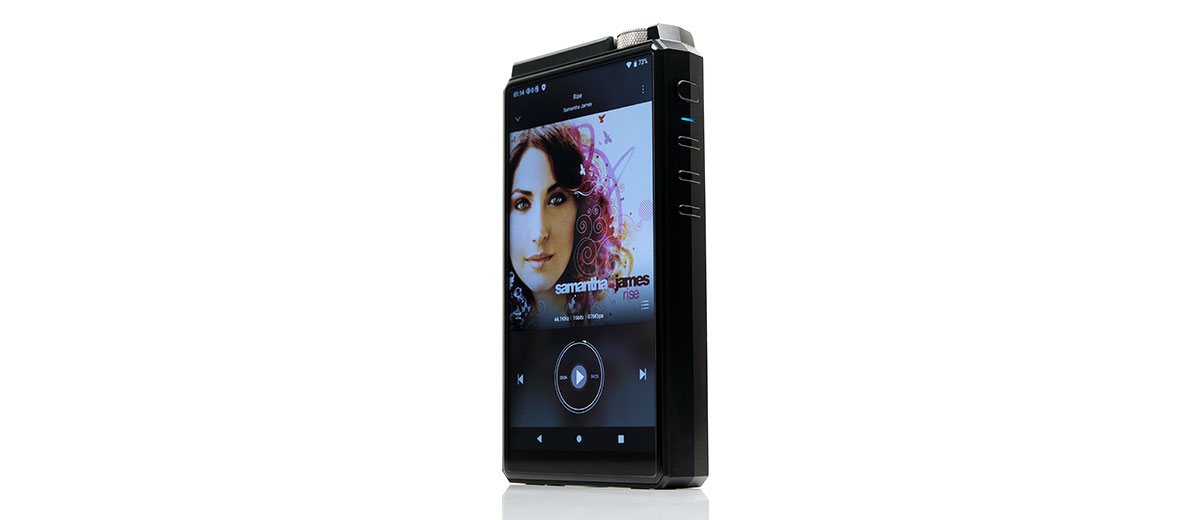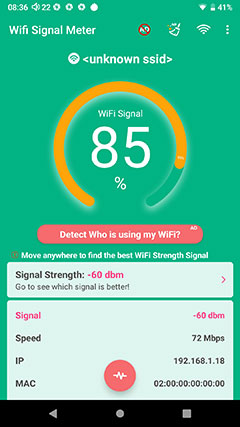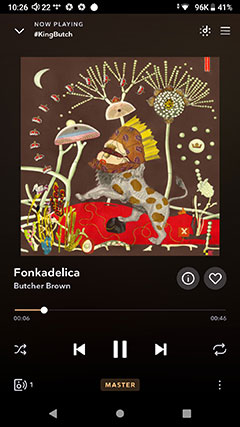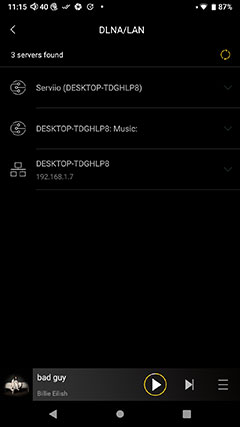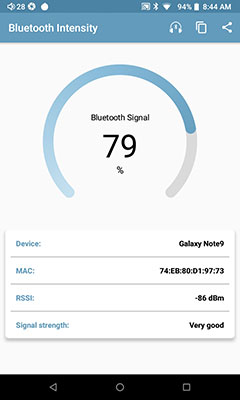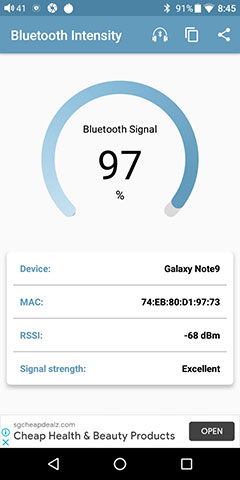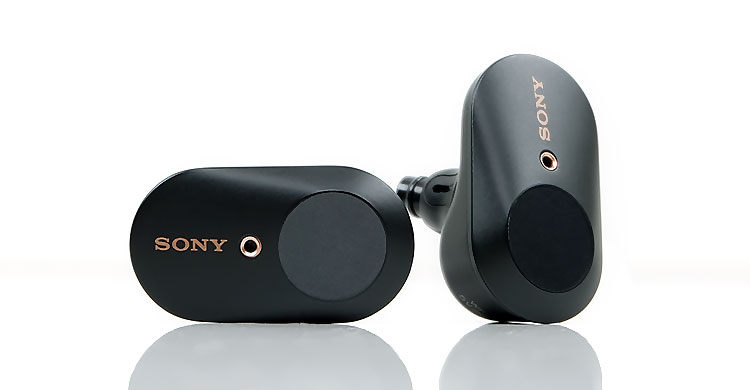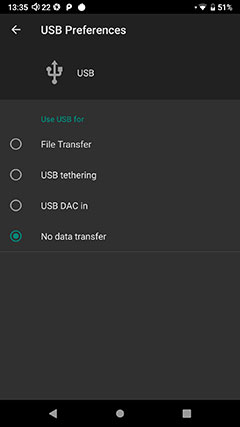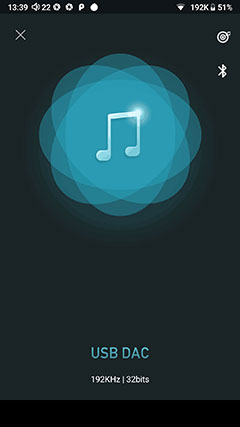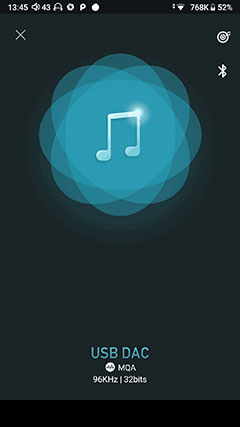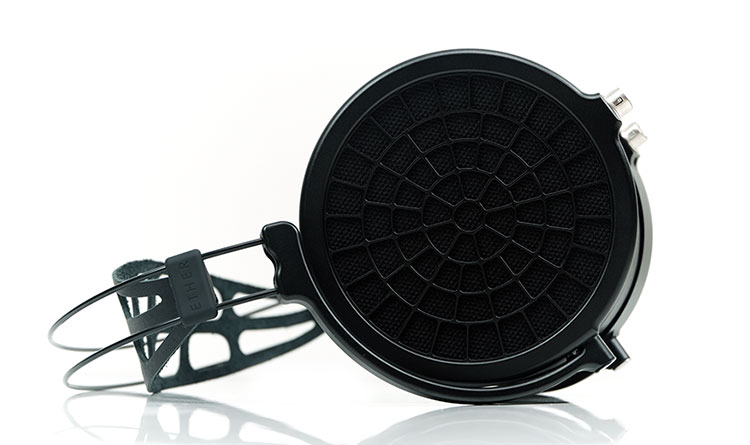HiBy R8 Sound Impressions
Summary
The R8 is an excellent upgrade to the R6 Pro in terms of dynamic range and power. You can A/B the differences reasonably easily when comparing the two, especially with headphones though both do share a common natural and fuller-sounding signature.
The best way to describe the improvement is like listening to a set of good speakers in a small room in your house and then walking into an acoustically treated larger professional studio chamber. And not just the LO/PO output sound but the Bluetooth sound with TWS and the Hifiman Ananda also offered the same upgrade in performance.
So what does an upgraded performance sound like? Well, I certainly think HiBy is now maturing its house sound because if the R6 Pro and R5 alluded to a slightly warmer-than-neutral presentation then the R8 has nailed it.
This is a ‘natural to slightly euphonic’ tone with a rich and smooth delivery but with much better dynamic range and detail than before and a far blacker background at higher volumes to help it along.
The low-end on our pairings sounded full without being aggressive, vocals offer better texture and sound more expressive than the R6 Pro. The treble performance on our gear still has that slight fade to ensure the sound remains liquid without any loss of headroom. This is an ideal source for peppy monitors that need some instrumental body or smoothing out brittle top-ends.
Timbre
The smooth yet airy and detailed tone is becoming the house sound of HiBy for me. They may have hinted at it before but with the switch to the AKM chipsets and away from Sabre, they seem to have doubled down on ensuring the timbral response from pairings is euphonic and full-bodied, especially for the low-end and the vocals.
I found the instrumental timbre from the bass to the lower-mids to be fuller sounding than the DX220 MAX and though not quite as ‘dense’ as the PAW 6000 it improved on the Lotoo’s layering capability sounding more expansive. Certainly, it has more weight and power than the very neutral tone of the FiiO M15.
However, instrumental timbre, full as it may be, sounded more liquid on the attack compared to the iBasso alternative, perhaps a little softer overall. I tend to find that is a trait of the AK4497 and something I heard in the Yulong DA10 desktop amp/DAC which uses the same chipset.
This is more of a SET sound than a solid-state sound at times, where drum notes have a long sustain, perhaps a longer decay but a softer attack.
Vocal Tones
You can hear that also in vocal performances from the R8 which are very immediate and more complex sounding compared to the R6 Pro. The Odin pairing was perhaps my favorite matchup as a result. It has this delicate precision-driven forward mids response that can fatigue if poorly matched.
Not with the R8, they sounded big and bold with tons of character, yet ‘juicy’ and smooth at the same time. The positioning is still to the fore but instead of fatiguing they sound intoxicating which is just how I like my vocal performances.
Some lower-end DAPs tend to introduce a little upper mid hardness where sibilance can come to the fore with monitors such as the Odin or Campfire’s Ara. The R8 avoids that with its slight treble fade but without ever once coming across as lush and congested.
Turbo Mode
I preferred to keep Turbo Mode on, even with IEMs. Granted, there will be a bit more hiss at low volumes on sensitive IEMs, and if that bugs you then I advise turning it off and going 3.5mm to minimize interference.
However, Turbo Mode for me did a better job in terms of mids performance with female vocals sounding denser and more vibrant and staging left-right width enhanced. Sure, you can up the volume in non-turbo to compensate but it still sounds relatively relaxed in comparison to having turbo mode on.
Staging
The R8 tends to exhibit a bit of bass to mids bias over absolute height. If you were to draw a line, save for a vocal nudge, it is a very nuanced but linear drop from the low end to the treble. It won’t deliver an ethereal high-fidelity type of staging experience nor would I term the presentation as having a ‘gossamer touch’.
This is something bolder, more planted, and more powerful sounding with excellent staging width and depth, particularly with the turbo mode turned on. Vocal is to the fore and very expressive, at least compared to the R6 Pro, though just a shade further back than the DX220 MAX’s more intense midrange presentation.
Instrumental separation and imaging are excellent, particularly in the midrange. The level of decay and the enhanced dynamic range from the R8’s presentation keep a firm level of control despite the more prominent positioning. Compared to the R6 Pro, it is certainly fuller sounding and more vivid but at the same time, everything has space to breathe.
Wireless Performance
WiFi
The R8 WiFi is industry standard as far as I am concerned. Not quite as strong as a good smartphone but on par with good DAP performers such as the M15 and marginally better than the R6 Pro.
You could debate the R6 Pro performance as being more or less the same to allow a margin of error but I consistently found it 1-3dbm lower than the R8 wherever I had it positioned.
I do wonder if that is the effect of the denser stainless-steel body blocking more signal compared to the aluminum of the R8. Once you got a bit further away the R6 Pro WiFi signal dropped off a bit quicker than the R8 whereas the R8 and M15 performances were similar.
Streaming
With Android 9, you can pretty much download any app you want from the APK Pure or the preinstalled Google Play wirelessly as well as do OTA updates for the firmware. I have already gone through 2 firmware updates during this review process and both downloaded pretty quickly. The current firmware I have now is 1.2G.
While Google Play will be fine for most apps I tend to revert to APK Pure for my TIDAL and Qobuz due to some regional locking issues. You can access pretty much any streamer you want via APK Pure and it is not region locked either so those in a region that cannot normally access TIDAL via Google Play can do so on APK Pure.
In terms of streaming smoothness, all apps bar Qobuz worked without any issues. Qobuz had some teething problems with their latest version, 5.11 on the R8 which forced me to roll back to 5.4.1 to get to work without a hitch.
Something about 5.11 did not seem to like moving from hi-res to CD quality or back again and would often get stuck with tons of tracks simply not playing at the highest possible resolution. It would not resolve until I did a fresh install again.
I had thought it might be my own modem causing the issue but once I rolled back to 5.4.1 everything was working as it should and in full hi-res glory up to 24BIT/192k sample rates where possible, (if you can find them in their catalog). Once you do find them they sound fantastic.
DLNA
The DLNA service within HiBy Music is a lot better than before. I suspect the additional RAM and processing speed helped because the entire setup and delivery were super smooth on my wireless server (Serviio) with zero buffer issues using 24BIT/192k PCM tracks.
I still prefer the more refined 3rd Party app services via Google Play for DLNA such as BubbleUPnP and Hi-Fi Cast with their deeper setup options and stronger GUI interface but for some of these you have to pay for like Plex.

BitPerfect & MQA
This is a competitive advantage but not quite as unique as a few years ago now that both FiiO and iBasso are working on bit-perfect platforms with their latest firmware. It is still very important though, especially for streaming and OTG.
HiBy has doubled down though on their platform macro processing capabilities with both MSEB and up to MQA 16X unfolding and rendering on local files and across all audio apps (MSEB). You can see the actual bit rate in the top notifications bar when using the likes of TIDAL & Qobuz.
Bluetooth
The R8 supports Bi-Directional Bluetooth amp and DAC services as well as their own HiByLink client/server remote control services. It also offers LDAC with BT5.0 as standard meaning excellent wireless headphones such as the Hifiman Ananda BT and the Deva should be optimal.
If you happen to have something like the W5 BT dongle from HiBy you can go one step higher with their own UAT codec which has a higher data rate than LDAC.
The actual Bluetooth signal and audio performance on the R8 is also a definite step up on the R6 Pro’s BT signal strength, both near and far in terms of distance.
As you can see from the images above, set at 2m, we were getting up to 12dbm better signal strength than the R6 Pro. It was not quite at the M15 level after several tests so I do wonder if that is due to the positioning inside the housing or the type of chipset HiBy is using.
Bluetooth Connected Range
For this, we tested the R8, R6 Pro, and FiiO’s M15 with Sony’s flagship TWS, the Sony WF-1000XM3. The range of the Sony is not class-leading, that honor belongs to the likes of HELM’s TW5.0 and Edifiers TWS NB. However, it’s par for the course for a good TWS so a decent barometer for signal stability.
I found the range of the R8 Bluetooth for the Sony TWS to be the same as the RF6 Pro but a little more stable with less dropout at around 10m with one wall in between the source and receiver. The M15 did slightly better for range by around 1-2m and had a similar level of stability.
Bluetooth Audio Quality
One thing stood out in our Bluetooth testing and that was the quality of the audio on the R8 compared to the R6 Pro. I am not talking about maybe a little more resolution but a ton more dynamic range and detail.
The M15 was a lot closer to the R8 in terms of quality BT DAC and amp performance but that jump from the R6 Pro, no question there is a better Bluetooth output inside the R8 or at least massively optimized for audio performance using TWS.
Wired Performance
USB-DAC
To enable the USB-DAC feature on the R8 you need to be using firmware 1.2G or higher. I suspect by the time you get your R8 that will be the default firmware available on the international edition.
The R8 is plug-and-play on the latest Windows 10 editions and you do have access to WASAPI drivers rather than ASIO to use it as a DAC. I found absolutely no issues working it in a wide range of media software players from Music Bee to Foobar, and Roon. It will stream pretty much any compatible codec you throw at it including MQA decoding up to the max.
Roon was especially good at interfacing with the R8 even though the R8 is not officially ‘Roon Ready’. Working Qobuz or TIDAL or local MQA tracks was very straightforward as well as setting up decoding and rendering on the R8 as opposed to the PC.
On the R8 side, you do need to activate the USB-DAC feature via your dropdown menu USB preferences before it brings up the USB-DAC screen. However, it is superior to the iBasso version with a lot more data coming up such as the bit and sample rate as well as the format such as FLAC or MQA.
You can also wirelessly connect via Bluetooth to a TWS or headphone and transmit from the R8 whilst in USB-DAC mode which is a nice little bonus.
USB OTG
You can do digital audio with bitperfect output via the USB output on the R8 or use it for expanding your storage capability with flash drives. Both work seamlessly.
I have to say the HiBy Music app is one of the few media manager apps from DAP makers that not only reads OTG flash drives but also scans and integrates the files into your main media library.
Mango does not do that and I have yet to get FiiO’s own media app to recognize OTG flash drives never mind integrate their stored audio files into the media library.
If you do want to go digital audio then the USB-C output on the R8 is functional for OTG output as well as coaxial output. The supplied USB-C cable will allow you to hook up to desktop streamers but at the same time, short 3.5mm coaxial USB-C cables work just fine for smaller solutions such as the Hugo 2.
I preferred the coaxial connection to the Hugo 2, it sounded beefier and more dynamic than the USB OTG connection from the R8. The USB-C to micro-USB OTG connection sounded quite neutral and a little flat by comparison.
Synergy
Noise
The noise floor has substantially improved on the R8 from the R6 Pro though it is not a completely black background in terms of hiss for sensitive gear.
I would still advise Empire Ear Zeus users to look away now as the hiss levels are a shade too high for them though it is also too high on the DX220 MAX so possibly a moot point.
It does improve with the likes of the Campfire Audio Solaris SE and Andromeda with a blacker background on the 3.5mm unbalanced output. However, the 4.4mm balanced output is too high for hiss for the likes of the Ara and Solaris SE.
In that regard, the DX220 MAX is still the quietest of the competing media players at this price point for low noise and very sensitive IEMs with the R8 running closer to the M15 noise floor performance.
Once you start moving up the impedance values and with lower SPL numbers, (sub-110dB), then the R8 chucks out a much blacker background. Empire Ear’s Odin and Noble Audio’s Sultan were good pairings in that regard with low-noise floor performances.
Our top-ranked monitor from 2019, the Vision Ears Elysium has a perfectly black background in both balanced and unbalanced and in non-turbo and turbo mode. That is a good starting benchmark with a 16Ω and 105dB SPL rating.
Pairings
IEMs
Although the stock sound is more on the natural to warm side, that does not necessarily mean that already warm IEMs are out or should sound too soft. What I would hesitate on is super efficient IEMs where you do require a black background for tracks with quiet passages. That may well be the R8’s Achilles heel.
However, for the latest current demanding electrostatic hybrids, noise is not an issue. The likes of Empire Ear’s excellent Odin delivered some excellent synergy with the R8, particularly with its forward upper mids which sounded meaty and smooth rather than bright and thin.
I still think the Odin low-end has a bit more mid-bass punch on the DX220 MAX but you cannot fault the R8 for low-end weight and body. Certainly more powerful sounding on the R8 compared to the FiiO M15, especially with turbo mode turned on.
That weightier tone also meshes wonderfully well with the Sultan from Noble Audio. This is an IEM that has a dense-sounding bass response and a warmer midrange than the Odin. The R8 stays true to that signature stripping nothing away from the Sultan’s low-end power and at the same time retains a very liquid almost sweet overtone on its treble.
The final test IEM we used was perhaps one of the most impressive, the qdc DMagic 3D. The noise floor was super low, in fact, pitch black with a beautiful dynamic driver timbre that responded brilliantly to that R8 low-end weight without a hint of bloom. The staging width and vocal density were equally impressive. I could listen to this pairing all day long, to be honest.
Headphones
This is a DAP with enough power to compete with some dedicated desktop amps when turbo mode is switched on. At just over 1W into a 32Ω load, it is second only to the DX220 MAX in terms of raw mW numbers and only the most inefficient of planar headphones or super-high impedance dynamic driver headphones are out of reach for the R8.
For example, we tested the Dan Clark Audio Ether 2 on the R8 when comparing the Lotoo PAW 6000, (see page 4). This is a planar headphone rated at 16Ω and roughly around 92-94dB SPL. It needs current and plenty of it to sound optimal. In terms of voltage into mW, I have always found that 1W with this headphone to be just about right.
The R8 simply squashed the PAW 6000 for dynamic range and staging expansiveness. The Lotoo can provide reasonable current so it can get loud but the presentation sounds flatter or smaller and without the same level of vibrance when paired with the R8.
You can get close also with the FiiO M15’s 800mW ‘over-ear headphone’ mode but what swings it for me is the better low-end power on the R8 compared to the M15 which the Ether 2 laps up.
The Audeze LCD-X is a headphone that I have a love/hate relationship with. Its treble can often sound very hard with poor source matching and if underpowered can sound very flat. The R8 sounded neither with the LCD-X.
Compared to the R6 Pro, the timbre was in the same ballpark but the R6 Pro lacked that midrange vibrancy which the R8 did remarkably well for a portable source. Vocals shined on the LCD-X/R8 pairing with more textured detail yet with very little in terms of nasty sibilance.
Click On Page 2 below for Hardware & Software Impressions

